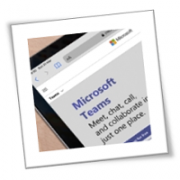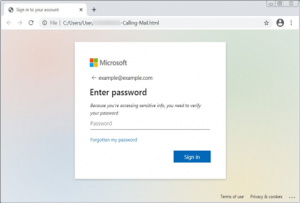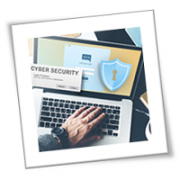It’s no secret that the internet can be a dangerous place. Hackers, scammers, and identity thieves are always looking for new ways to steal your information or scam you out of your hard-earned money. That’s why it’s critical to take steps to protect yourself while you’re online. One of these is to make sure that the sites you visit use HTTPS
What is HTTPS encryption?
Hypertext Transfer Protocol Secure, or HTTPS, is a secure communications protocol used to send and receive data over the internet. Data that is transmitted over HTTPS is encrypted, making it more difficult for third parties to read. HTTPS provides a higher level of security than standard HTTP and is often used for online banking and eCommerce transactions, as well as other sensitive communication.
HTTPS was introduced in 1995, so older websites that have been left without regular maintenance usually don’t have this implemented. But even to this day, unsecure websites exist, and fraudsters can easily take advantage of them.
When you visit a site without an HTTPS connection, everything you type or click on that website is sent without encryption. This means that anyone who intercepts the data transferred between the website and your device can view the information as is. For instance, cybercriminals can use unsecured HTTP connections to gain access to your Social Security number, credit card information, and other personal data.
What role do HTTPS certificates play in cybersecurity?
When you visit a website, your device uses an online directory to translate its alphanumeric name into a numerical address and saves that information so that it doesn’t have to check the online directory every time you visit the same website. But if your computer gets compromised via an HTTP connection, it could be manipulated into directing a perfectly safe web address like www.google.com to a malicious website. Most of the time, users are sent to spoofed sites that look exactly like legitimate websites and are designed to trick users into divulging their credentials.
To prevent such incidents, the online directories mentioned earlier issue an ecosystem of certificates that turn HTTP into HTTPS, making it impossible for anyone to be redirected to a fraudulent website. These certificates contain information about the site, such as the domain name, company name, and location. It also includes a public key that is used to encrypt communications between a user’s browser and the website they’re viewing.
How to ensure cybersecurity safety with HTTPS
Here are a few things to consider the next time you browse the internet:
- If your browser marks a website as “unsafe,” think twice about clicking “Proceed anyway.” Click the prompt only if you are absolutely certain no confidential data will be transmitted.
- Use trusted web browser extensions like HTTPS Everywhere. These extensions encrypt your communication, which is especially useful if you visit unencrypted websites.
- Always be vigilant. Some sites may have HTTPS, but it doesn’t mean they’re safe. For example, goog1e.com (with the “l” replaced with a one) could have a certificate, but the misspelling clearly indicates that it’s an untrustworthy site. Cybercriminals use similar spellings of authentic websites to fool people into thinking that they’re on a secure site. This is called typosquatting or URL hijacking.
- Avoid sites that don’t use the HTTPS prefix.
While HTTPS is not a cure-all for internet security, it is a critical step in protecting yourself online. Contact us today if you want to learn more about HTTPS and other cybersecurity tips.
If you are looking for an expert to help you find the best solutions for your business talk to GCInfotech about a free technology assessment
Published with consideration from TechAdvisory.org SOURCE













